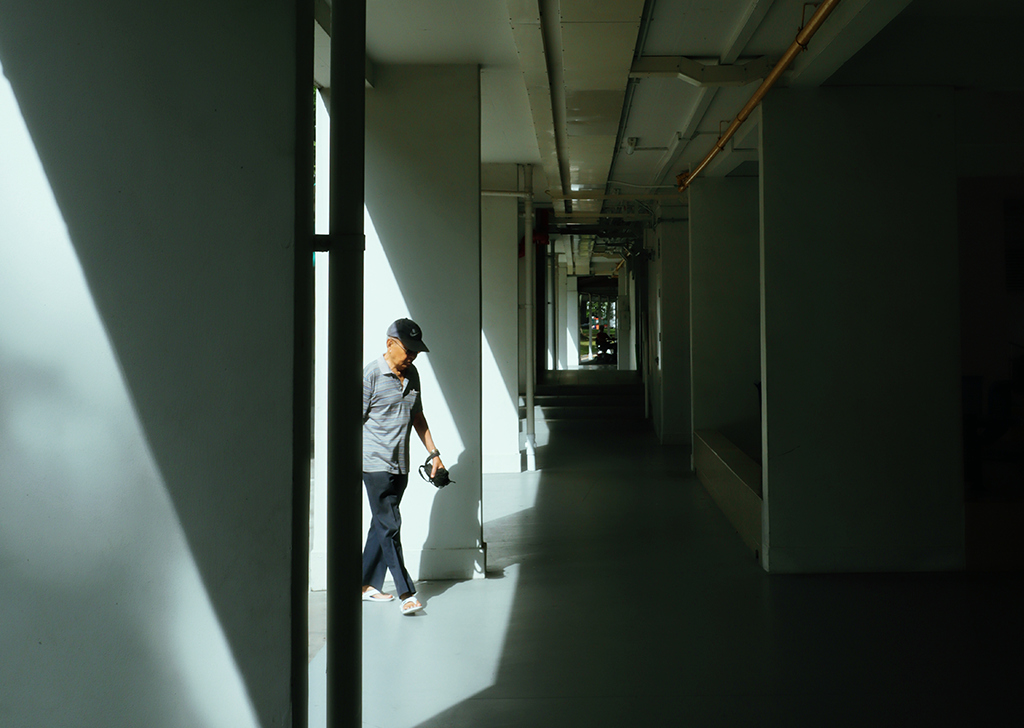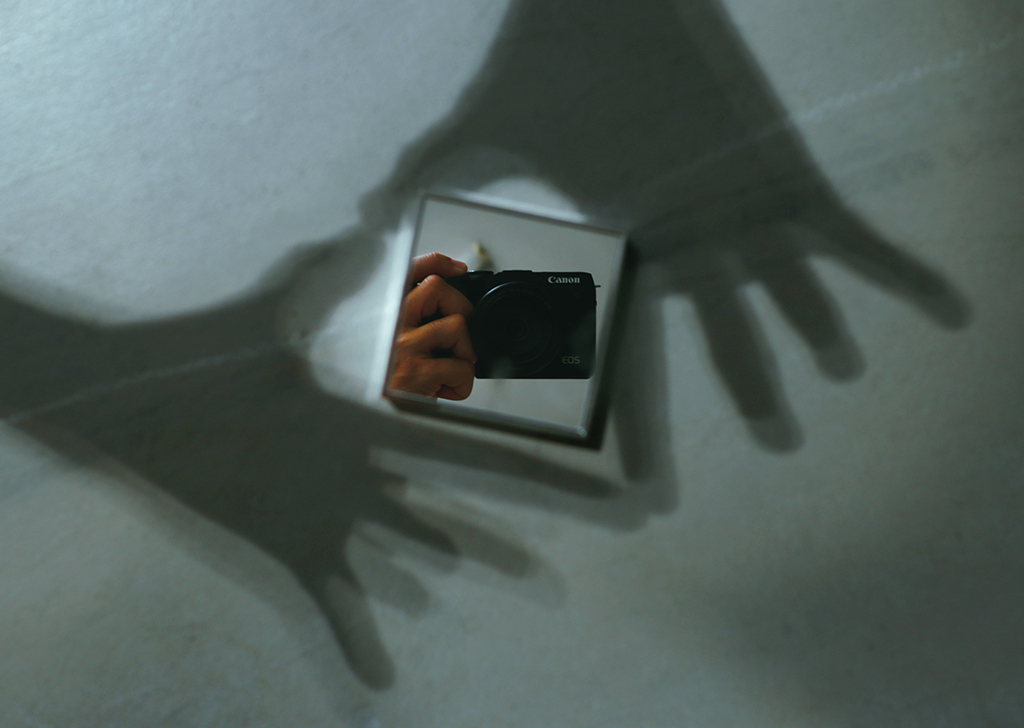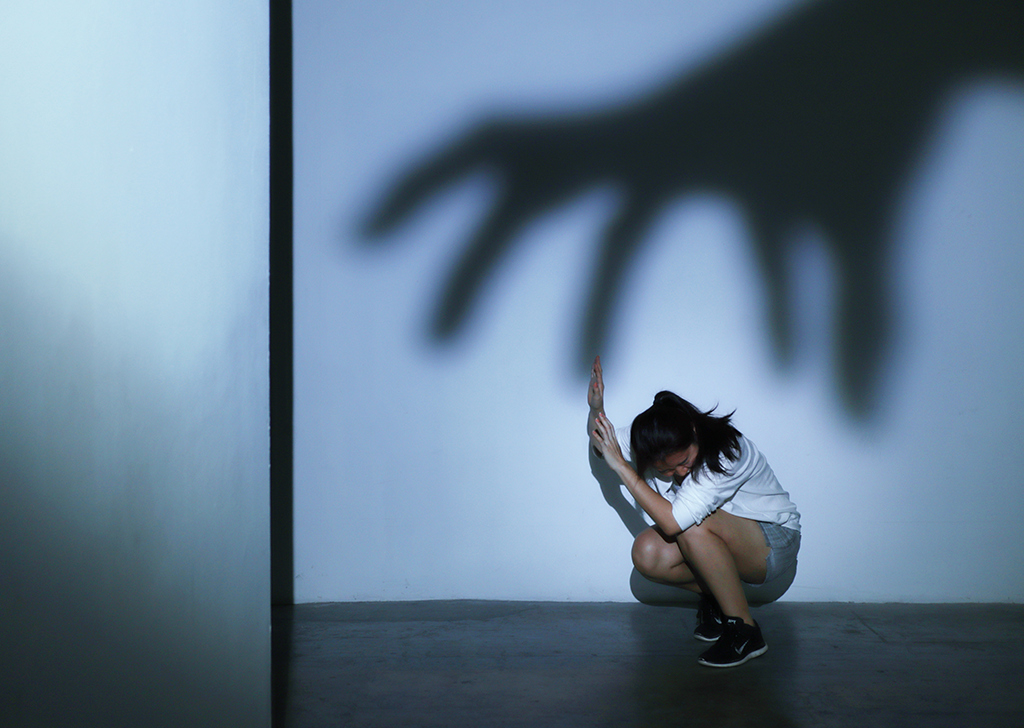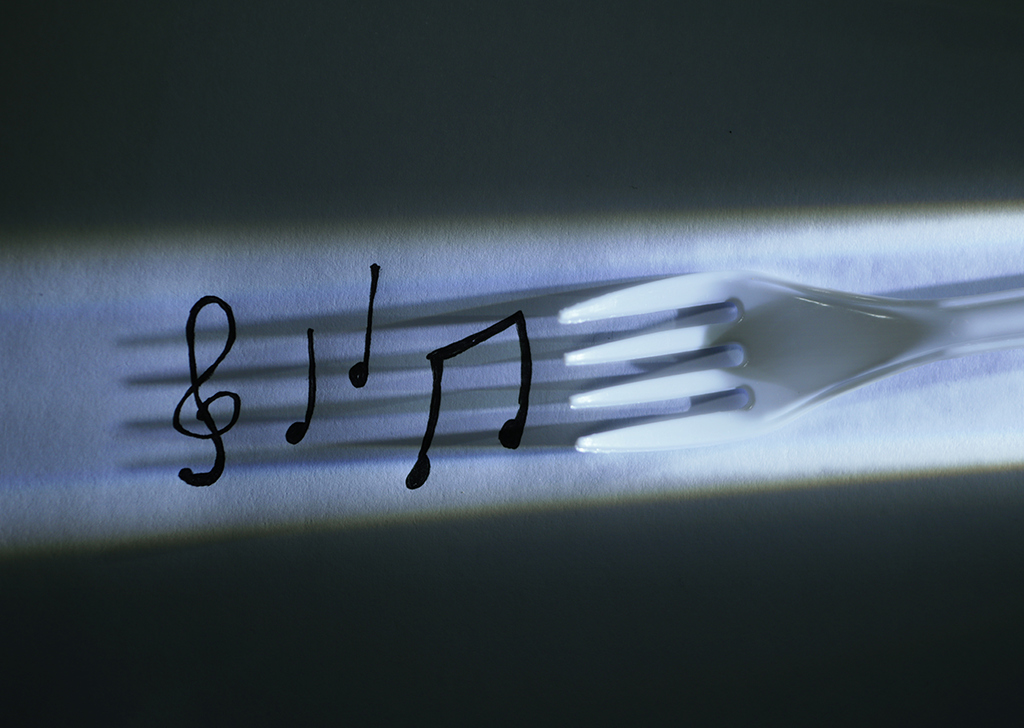
When an object blocks light, a shadow is cast. This daily natural occurrence is often neglected due to its commonality, but when cleverly incorporated in photography, the results can be stunning! Whether you’re looking to amp up your creativity with a new project, always had an inkling towards the darker side of life, or just plain curious, here we share 3 simple everyday photography concepts to help you start mastering the art of shadow photography.
(Images by Alvin Choon, @alvinchoon)
Shadow with Human
Each shadow is unique. The shape, form and size changes organically based on the light source’s strength, placement (different angles creates different shapes) and distance between the object.

EOS M6 Mark II, EF-M22mm f/2 STM, f/3.5, ISO 100, 1/80sec, 22mm

EOS M6 Mark II, EF-M22mm f/2 STM, f/2.0, ISO 100, 1/100sec, 22mm
For the above example, the photographer took inspiration from classic horror movie scenes – a scrawny hand-shadow closing in on a helpless human subject. The portrayal of the shadow, along with the absence of the owner, adds an eerie and mysterious feel, enticing the viewers to invent the identity and back story of the image.
If you’re planning to use this shadow photography concept as your first series, having a mood board of what you’re planning to achieve is a good way to start. Do you want to incorporate only the hands (like the examples seen above) or the full human body? Will you need more than one person, and what mood do you want to achieve?
To help you out, here are a few simple ideas to try:
- ‘Picking up’ human subjects with the shadow hand.
- Human subjects petting animals made out of shadows. You can try hand shadow puppets to create interesting animal look-a-like shapes.
- Recreating a shadow-silhouette scene.
Prints and Patterns
Considering prints and patterns cast by shadows are everywhere, it’s easy to build on what’s already available. Go out during a sunny midday and pay close attention to every shadow cast by the sunlight. You’ll find appealing patterns caused by window railings, architecture, plants, or even people.

EOS M6 Mark II, EF-M22mm f/2 STM, f/2.0, ISO 100, 1/100sec, 22mm
Do note that capturing shadows outdoors can be very susceptible to change based on the weather, cloud formations and more. This means that the shadow patterns are almost always unpredictable, so it’s good to have a rough idea of what you want.
Otherwise, take it as an exercise for quick thinking on the spot - practice makes perfect! Here are some simple ideas you can try for your first time:
- Pick out any interesting shadows and cast it on a plain shirt as prints.
- Use a human subject and allow the shadow to refract on the organic contours of the facial features. You can also move them around to conceal, reveal and frame parts of the face.
Shadow Doodles
Different objects blocking the light source produce different shadow silhouettes. However, these different forms can be manipulated to create a series of creative shadow doodles.

EOS M6 Mark II, EF-M22mm f/2 STM, f/2.8, ISO 100, 1/80sec, 22mm
In the above image, a shadow formed when the photographer shone a torchlight against a plastic fork on a white background. It resembled a music sheet, so the photographer drew a treble symbol and lyrical notes as elements to bring his idea to life.
There are limitless possibilities when playing around with this concept, but you’ll need to be observant. Try experimenting with everyday objects, such as a spoon or a sieve. Shift the light source around the item too (if you’re doing an indoor shoot with lighting equipment), to allow different shadow shapes to cast. You can even hide the object that casts the shadow to further intrigue the viewer. If you need more inspiration, watch this!
Shadow play photography relies much more on storytelling, the mood, and how cleverly one can incorporate and use shadow in innovative ways. Just remember to keep experimenting with different objects and lightings, be bold with your ideas, keep it fun and charm the viewers with your creativity!

































